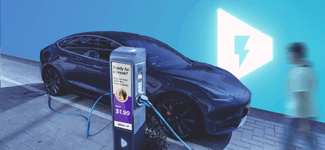Spring is finally on the way, so perhaps the spirit of the season can inspire you to breathe new life into campaign management. To help you in that mission, we’re pleased to unveil the optimization engine, a new feature for Broadsign Direct.
This new feature enables your business to accept more campaigns than it previously could, working in the background to redistribute new and existing campaigns in ways that make optimal use of your inventory while still respecting targeting parameters.
Let’s walk you through how it works.
Ready to get started with the optimization engine (also known as “Reallocation”)?
Check out our documentation!
Solutions for DOOH management
The OOH industry’s digital transformation is expected to continue on its growth trajectory in 2022. Given the format’s momentum, media owners who are looking to meet the increased demand for digital campaigns may want to consider solutions for more efficient network management. As we’re seeing more media buyers allocate a greater share of their budgets to DOOH campaigns, manual solutions like spreadsheets can’t cut it for handling the complexities and specificities of campaign goals.
This is where the optimization engine shines. Sometimes, multiple campaigns are vying for the same slot in your inventory. But they can’t all fit, and as a result, you might be forced to say “no” to a customer even though your inventory hasn’t entirely sold out. This leads to gaps in scheduling, which amounts to missed revenue opportunities for you.
The optimization engine resolves issues like this by reallocating ads to different slots, while respecting targeting parameters, so that you can maximize network yield. Best of all, it does it all for you – no need to lift a finger. Even if your juggling skills are second to none, rebalancing network availability can be a complex and daunting task, but it’s something that you’ll find our intelligent algorithm can accomplish with ease.
How the optimization engine delivers on what it promises
The optimization engine intelligently analyzes your network’s inventory to check for availability. All priority settings and parameters are considered in this process. Designed to make inventory management smoother and more efficient, the tool is continuously running in the background, even overnight, to optimally organize the following day’s schedule.
Let’s say, for example, you have four screens in your network and are looking to book some campaigns. The first campaign (campaign A) is currently booked to play on all four screens from the 5th and 10th of the month, with a goal of 288,000 impressions. This booking totals a 50% fill rate on all four screens. Then, at the same time, the sales team is busy negotiating a new deal (Campaign B) and to see if there’s space for a second campaign, they run an availability check on the network.
Campaign B is also expected to run the same month as campaign A but between the dates of the 1st to the 7th on your first and third screens. The buyer is looking to obtain a 70% fixed Share of Voice on those screens. The dilemma? Together, campaigns A and B exceed the max fill rate on their shared screens on the days they overlap. Without the optimization engine running, the availability check would generate a result of being partially or completely unavailable. But when the algorithm kicks in, it redistributes campaigns wherever possible to make enough space for both.
In this scenario, campaign A’s 288,000 impressions will be redistributed in a way that also allows campaign B to run on the days with overlap. This is something that couldn’t have been achievable without the optimization engine.
What about fixed campaigns?
For now, the optimization engine can only shuffle permissible campaigns, or when the system deems there is potential to increase or decrease saturation. Fixed campaigns won’t budge.
Who benefits?
Everyone! Ultimately, this feature’s goal is to help maximize revenue for media owners by filling up as much used space as possible. But advertisers equally benefit, as the algorithm always considers campaign parameters before making adjustments to scheduling. It’s all about maximizing opportunities.
Questions? We’ve got you covered.
Want to learn more? Reach out to your Broadsign rep to schedule a personalized demo.






